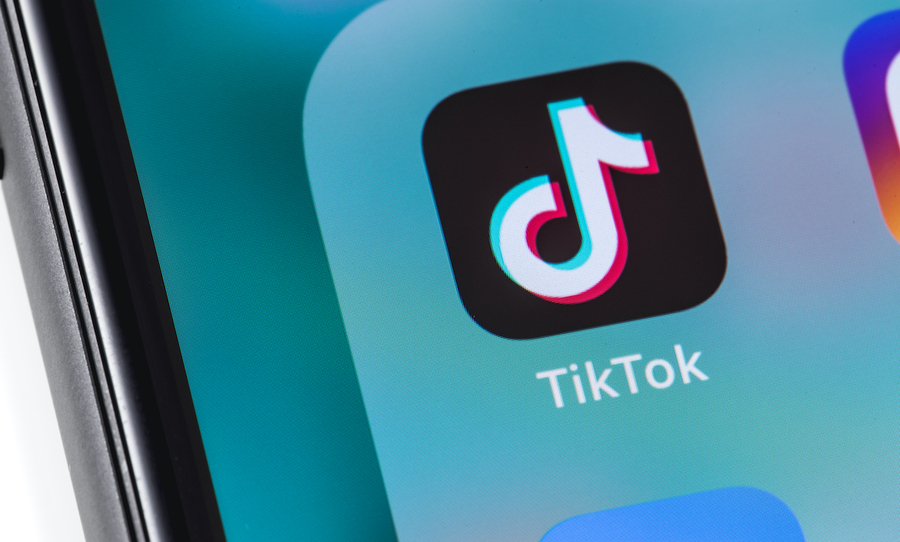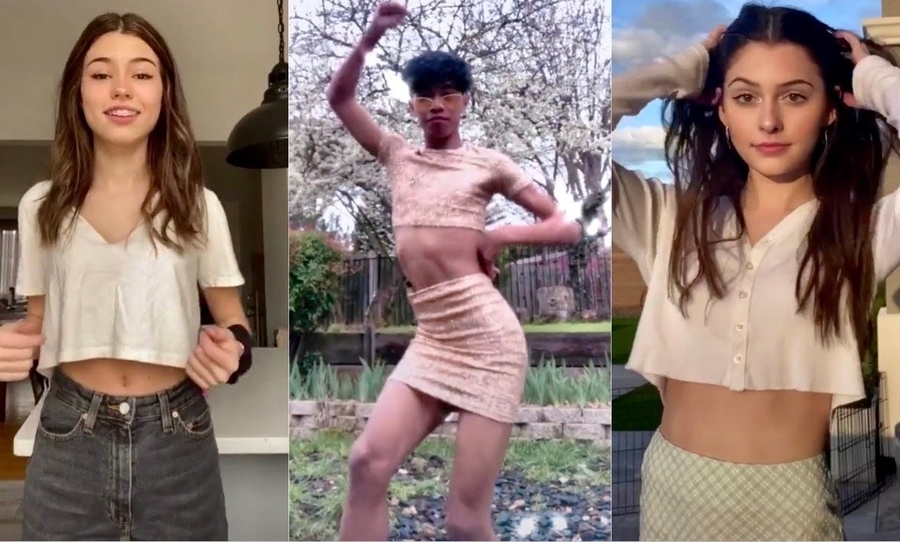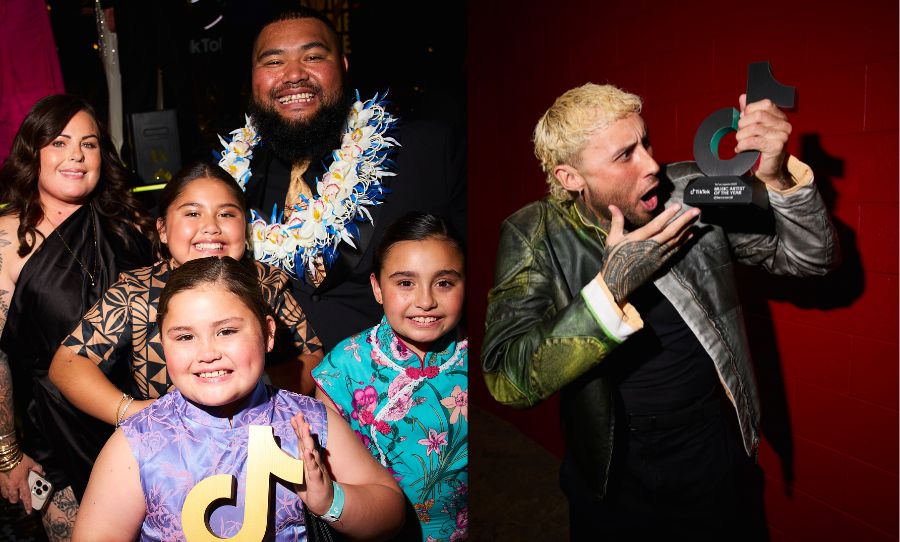This week, TikTok implemented new rules barring adverts that promote “negative body image” for users U18, but is the app doing enough to curb the widespread glorification of eating disorders within user-generated posts?
TikTok is the Chinese-owned short video app known for its viral dance routines, beefs with Donald Trump, and of course, its fire meme content.
But, dipping below the surface level of funny dogs and iconic dances, once a user truly engages with the app and becomes entrenched in the algorithm and fed an endless array of video content, a growing culture becomes abundantly clear. TikTok has a pro-ana problem.

Now, maybe this isn’t universal. I am a 20-year-old female who engages with content made for late-teens and early-adults, and not gonna lie – I am quite fem. But in saying this, it’s a scary reality if this is all it takes to be chucked into an algorithm of TikTok videos which literally outline step-by-step how to trigger, keep, and hide an eating disorder. Shit’s fucked.
While TikTok creators have certainly fostered inclusive communities by sharing clips encouraging body acceptance, this culture simultaneously exists alongside triggering, eating disorder-related content. There is something so disorientating about scrolling from a body-positive post to one immediately after showing a thin girl telling you to eat ice cubes.
Back in February, BuzzFeed News reported that TikTok users had noticed an increase in the number of videos glorifying disordered eating appearing on the notorious “For You” page of the app.
It’s not the first time that online communities mainstreaming eating disorder tactics have managed to infiltrate social media spaces. Many of TikTok’s predecessors – MySpace, Tumblr, and Instagram – all struggled to stifle pro-ana (short for pro-anorexia) content. If anything, their algorithms actively lifted these ideas to mainstream consciousness.
tw// eating disorders
as a person who had an eating disorder in 2014 fueled by the “ana” tag on tumblr it’s kinda scary to see the romanticization of the “cigarette skinny” body off of tik tok and i hope young girls remember every body is beautiful and deserving of praise <3
— Sam ;) ⚡️ (@slimysamm) September 26, 2020
people on tik tok post straight up triggering eating disorder content and theyre like “aha i use this app to vent!! it helps me cope!!!” as if ed’s arent literally social disorders that get worse when ppl add in their opinions. its like 2014 tumblr on there sometimes
— magin (@ladycanada12) May 26, 2020
The aforementioned sites had to actively seek out pro-ana gateways (like hashtags and forum groups) and shut them down. Then, pro-ana content creators got creative. “Pro-ana” communities were turned into “pro-ano”, and then, when that got shut down, it was “thinspo”, and so on. Moderators had to be on the pulse of every name change and quickly block its existence.
tw // eating disorder
why is there a tik tok audio that’s “eating disorder check!!” that’s so easily triggering i was not prepared at all wtf
— eesha (@feelthatrush) October 14, 2019
However, where TikTok is unprecedented is its endless algorithmic media, in the aforementioned “For You” page. True to its name, the app lynches your data and clocks you based on your demographic, friends, location, and age, as well as your engagement with the app itself, to curate your own unique user timeline, rather than one based on content that you sought out yourself.
This week (September 23), after months of criticism and new data provided by the Butterfly Foundation (which showed huge spikes in eating disorder behaviours), TikTok has taken measures to counter this pro-ana culture. From now on, the app will be banning adverts which “promote a harmful or negative body image.”
Tik tok is gonna end up giving me an eating disorder fr
— ralph lauren (@lauren__clark23) April 30, 2020
So what will this look like? The app will be vetoing advertisements that promote fasting apps and weight loss gimmicks. However, it’s important to note that this change only applies to users under the age of 18.
Alongside this new initiative, eating disorder-related searches will be redirected to the National Eating Disorder Association, rather than pro-anorexia streamlines of content.
“As a society, weight stigma and body shaming pose both individual and cultural challenges, and we know the internet, if left unchecked, has the risk of exacerbating such issues,” TikTok said in a statement. “That’s why we’re focused on working to safeguard our community from harmful content and behaviour, while supporting an inclusive and body-positive environment.”
people on tik tok post straight up triggering eating disorder content and theyre like “aha i use this app to vent!! it helps me cope!!!” as if ed’s arent literally social disorders that get worse when ppl add in their opinions. its like 2014 tumblr on there sometimes
— magin (@ladycanada12) May 26, 2020
Whilst the changes are certainly a step in the right direction, there is fear that perhaps this will not be enough to keep TikTok users safe from these harmful ideas of disordered eating. Much of the toxic content I have seen in my own user experience has not been from third-party adverts, but rather from content uploaded by users themselves.
Ultimately, the“For You” page curation tactics mean that content about eating disorders can at any point be flung onto your timeline, even if you go out of your way to not follow accounts that post about topics like eating disorders, weight loss or dieting.
Images & content on social media can trigger or normalize #eatingdisorder-related behaviors. TikTok is no exception, with its inclusion of pro-ana and pro-mia content. Let’s talk – there is positive content that you can view instead to help you on your #EDrecovery journey. pic.twitter.com/W732vkRMVc
— Robyn Kievit, NP, RD (@nutritionmentor) July 16, 2020
Most worryingly, this whole system that’s churning out content exists within a feedback loop. The more disordered eating content you see, the more you are served, the more you watch. It’s a self-fulfilling prophecy that becomes difficult to worm your way out of.
If TikTok is serious about changing the ethos of its platform to counter toxic disordered eating and body dysmorphia, they should take a look at their own algorithm, and the way in which it takes autonomy from its users in order to curate their timelines. Because, in the end, it’s not third party product content, but the content from fellow users, that is the most easily normalised.



